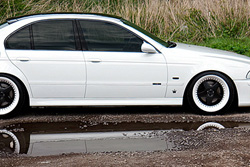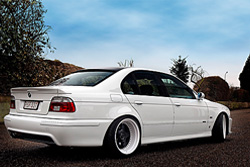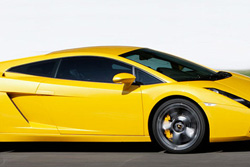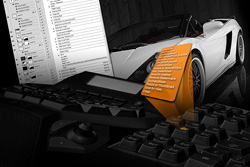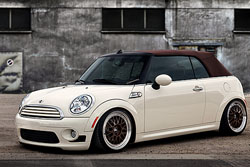RACE PHOTOGRAPHY, A DAY AT THE TRACK

Canon EOS40D - Canon EF-S17-55mm f/2.8 IS USM - 28mm 1/160 f10.0 ISO100
Advanced level tutorial by Mark
This is probably one of the most interesting action photography out there for automotive enthusiasts like ourselves, however getting to grips with this kind of events isn’t easy, as you’ve probably noticed you will be out of luck when trying to locate a book on this fast paced car shooting discipline, that is why we decided to dedicate a special tutorial on it.
We have been covering car races for several years, so we can give you some idea of what is happening on and around the track when it comes to photography, the first hurdle to pass is actually getting onto the race grounds.
Entry pass
Covering a race can be done in two ways, you could buy a regular entry pass and join the crowds on the stands, using a long telephoto zoom lens you might even be able to get some very nice shots, but you will soon encounter two major drawbacks to this method :
For one you are rather bound to one of two spots as you don’t want to be blocking the view for the people behind you for too long (they will get nervous quickly) and secondly using a long focal length (400mm at least) isn’t easy to keep steady, even with some kind of stabilization built into the lens or by using a monopod.
Most race tracks these days are surrounded by rather high fencing too, however some have holes cut in the fence at regular intervals to allow people to still be able to photograph the cars as they race by without having to deal with the distracting fencing.
A downside of shooting through a fence is that you will have to use manual focus, auto focus could sometimes focus on the fence instead of on the car you intend to shoot, so effectively ruining your shot altogether.
Press accreditation
If possible, try to contact the organization behind the race to obtain press accreditation, this will not be easy, but if you can prove them you are eligible for this by having a busy web site or your shots will be published in a magazine, chances are that you will receive a photographer pass to the event … and this means you are in business !
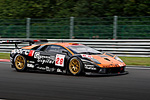 Depending on the race this accreditation can have some limitations, we usually receive full access, this means we can walk around on the paddock, in the pit lane and trackside, which is the access you need to really be able to cover a race nicely.
Depending on the race this accreditation can have some limitations, we usually receive full access, this means we can walk around on the paddock, in the pit lane and trackside, which is the access you need to really be able to cover a race nicely.
Getting onto the race grounds is only part of the problem, we'll go over some details you should always keep in mind to complete your day at the track with some stunning photographs.
Be prepared
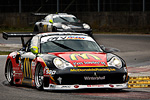 A race usually occurs only once or twice a year in your region, so expect to be travelling a lot when you plan to cover several races a year. You have to be prepared when you do get there, you will not have any time to go back home in case you’ve forgotten something as the track is mostly a long drive (or flight) away, so the key to success is a good preparation.
A race usually occurs only once or twice a year in your region, so expect to be travelling a lot when you plan to cover several races a year. You have to be prepared when you do get there, you will not have any time to go back home in case you’ve forgotten something as the track is mostly a long drive (or flight) away, so the key to success is a good preparation.
Make sure your batteries are fully charged the day before, both those for your camera and for the flash you plan to use, you can put the charger(s) in your luggage just in case you need to re-load as some races start practice rounds on Thursday and only finish on Sunday. Do take a look at your memory cards beforehand, format them inside the camera so they are empty to start with, you will need all the space they offer when you start photographing the race, consider backup cards, if you don't want to buy any extra try to borrow some from friends.
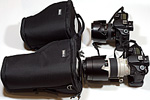 Decide on which lenses to take with you, chances are you will not be able to make a quick return to your car to get another lens, and carrying them all with you for four days in a row could get very heavy on your back. Personally I carry a wide lens (17-55) on one body and a telephoto (70-200 or 100-400) on a second body with both cameras on a belt system with holsters that keeps them safe.
Decide on which lenses to take with you, chances are you will not be able to make a quick return to your car to get another lens, and carrying them all with you for four days in a row could get very heavy on your back. Personally I carry a wide lens (17-55) on one body and a telephoto (70-200 or 100-400) on a second body with both cameras on a belt system with holsters that keeps them safe.
If the race is held on a professional track chances are you will be able to rent a locker to store equipment you don't really need to have on you all the time, like a laptop for instance, do keep in mind they will most likely not be insured, so storing them is on your own risk.
Take some kind of rain cover with you, both for yourself and for your gear, a nice leather chamois is indispensable in my race kit, it can absorb a serious amount of rain drops before it gets soaked.
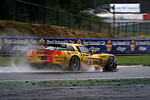 Knee pads. This might seem odd, but remember that some of the best shots are with the camera positioned at headlight level, which means you will be kneeling down to get this angle. Most tracks have dirt alongside, and it might have rained earlier, so you could get your pants really dirty without these little pads on your knees.
Knee pads. This might seem odd, but remember that some of the best shots are with the camera positioned at headlight level, which means you will be kneeling down to get this angle. Most tracks have dirt alongside, and it might have rained earlier, so you could get your pants really dirty without these little pads on your knees.
They are also great for getting down on your knees on the paddock concrete or in the pit lane … you might look like a fool, but at least you’ll be able to safe a trip to the knee surgeon in the long run.
Sun protection. Very important for races during the summer time, you will be standing for hours along the track, in the bright sunlight most of the times (well, perhaps not in some countries …) so don’t forget to put a cap on to protect your head from getting sun burn. A lotion might be a good idea too, but get one without perfume so you don’t smell like being on vacation, and don’t forget to apply it regularly, especially when you are sweating it doesn’t stay effective for hours on end.
A bottle of water, as you will be outside for a longer period of time it might be a good idea to have something to drink with you, so you don't have to return to the paddock area when you are thirsty. Normally during lunch time the practice runs are halted, so you'll have the opportunity to get something to eat.
Don’t worry, I’m a professional
This is especially true while being around the race track, chances are you will be rubbing shoulders with people that make their living from photographing the fast paced action of the races. Those are the guys swinging around a multi-thousand dollar setup, most likely with a giant white Canon telephoto lens attached to their 1dIII. As you’ve managed to get alongside them you have probably received press accreditation so you have every right to be shooting the race from the same spot. However keep in mind that their next mortgage payment could depend on getting the one important shot of the race, so show them at least some respect.
If you happen to stand next to a professional race photographer, keep an eye on him, most of the time they know the best spots around the track and you could even take a look at his technique, between sections you might even get to talk with him, and learn something, so don’t dismiss them completely, remember they all started out with their first dslr once.
What's in the bag ?
This is a tricky one, it all depends on where you’ll be doing most of your photographing from, for instance when you are working the pit lane a nice wide angle and a telephoto zoom up to 200mm are just perfect to get all the shots you might need.
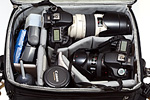 However when standing track side a 300mm or 400mm isn’t a bad idea, a day at the races can easily see you using just about all the lenses you have in your bag, from the wide angle right up to the long telephoto lens, with everything in between.
However when standing track side a 300mm or 400mm isn’t a bad idea, a day at the races can easily see you using just about all the lenses you have in your bag, from the wide angle right up to the long telephoto lens, with everything in between.
Most professionals will be carrying around a prime of 300mm up to 600mm depending on the track they are working, remember that a decent 300mm f/2.8 lens will cost a lot of money, the more reach to higher the price tag by the way, so only the real professionals will be walking around with those massive 500mm or 600mm units.
The more serious amateurs and professionals that are just starting out will be using a telephoto zoom lens instead of a prime lens, this could be a 70-200 f/2.8 when you can get relatively close to the action, however a zoom lens up to 400mm or 500mm would be more useful on most tracks. We actually use either the Canon EF70-200 f/2.8 L IS USM (with a Canon EF 1.4 Tele Convertor if we want to reach up to 280mm) or the Canon EF100-400mm f3.5-4.5 L IS USM when we need even more reach.
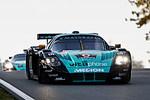 Once you pass the 200mm mark you should consider taking a decent monopod with you, it will help to stabilize the lens when using those longer focal lengths, it will not be helpful when panning, but for those head on shots a longer lens on a monopod will work nicely. Don’t consider a tripod, it will be of little use during your day at the track, perhaps for a few paddock or pit lane shots, but in the latter case the action is so fast paced that you will not have time to set up your tripod, so just leave it at home or in the car.
Once you pass the 200mm mark you should consider taking a decent monopod with you, it will help to stabilize the lens when using those longer focal lengths, it will not be helpful when panning, but for those head on shots a longer lens on a monopod will work nicely. Don’t consider a tripod, it will be of little use during your day at the track, perhaps for a few paddock or pit lane shots, but in the latter case the action is so fast paced that you will not have time to set up your tripod, so just leave it at home or in the car.
We consider a lens with some kind of stabilization a much better option compared to lugging along a tripod, or even a monopod. Our longer reach lenses offer two IS modes, one that will compensate camera shake in both directions, so ideal for shooting race cars or drivers that are standing still, and one mode that will only compensate movement in one direction.
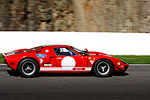 The latter is perfect for panning shots, as the car will most likely be passing in front of you relatively level, so the camera shake only needs to be compensated on the vertical axis, it allows you to shoot tack sharp panning shots at shutter speeds as low as 1/25th depending on the speed of the car.
The latter is perfect for panning shots, as the car will most likely be passing in front of you relatively level, so the camera shake only needs to be compensated on the vertical axis, it allows you to shoot tack sharp panning shots at shutter speeds as low as 1/25th depending on the speed of the car.
We also carry a flash with us, which is ideal to shoot drivers behind the steering wheel during the pit walk, or when photographing cars inside the pit box, problem here is that the open gate at the front will be overexposed if you shoot without a flash inside, hence you will need to light the pit box with the flash so you don't blow out the exterior.
Better safe than sorry
You are at a high paced racing event, don’t ever forget that while photographing track side or in the pit lane, these cars boast hundreds of horsepower and reach extreme speeds, hence they can take you by surprise, which isn’t a good thing in this case.
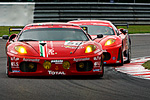 I was taking photographs at Eau Rouge in Spa when a Saleen crashed the tire wall at full throttle only a few feet away from were I was standing, as I used a long telephoto lens my angle of view was very small and I would never be able to see it coming. The Saleen lost control right outside of my angle of view, which is the biggest risk at the race track, fortunately I heard the tires loose grip and immediately turned away from the viewfinder to see the car approaching and I could jump further out of the way. Always 'listen' when you are standing at the side of a race track, most of the time you will be able to hear a car loosing it ... before it hits the barrier.
I was taking photographs at Eau Rouge in Spa when a Saleen crashed the tire wall at full throttle only a few feet away from were I was standing, as I used a long telephoto lens my angle of view was very small and I would never be able to see it coming. The Saleen lost control right outside of my angle of view, which is the biggest risk at the race track, fortunately I heard the tires loose grip and immediately turned away from the viewfinder to see the car approaching and I could jump further out of the way. Always 'listen' when you are standing at the side of a race track, most of the time you will be able to hear a car loosing it ... before it hits the barrier.
You have to keep an eye on the cars on the track, try to figure out where they could end up if they lost control, if it is near to where you are standing, move ! Just take another position that you feel is safer in case something goes wrong.
Also make sure you have somewhere to jump to in the worst case scenario, do not put your camera bag on the side of your exit, put it on the other side. A big mistake is to put your bag on the concrete barrier or hang it from the poles of the fences, if a car hits it chances are it will flex and your equipment could get airborne pretty quickly.
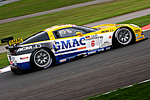 Get ear plugs ! No kidding, ever stood next to a straight when a Formula One car came by at full speed ? The sound is deafening to say the least, you can probably stand it for a few rounds, but with about 20 cars going by multiple time you ear drums will not take kindly to the abuse. Get those neat little earplug road workers wear when using pneumatic drills, they fit right into your ear and soften the sound considerably but still allow you to hear the tires squeeling when they loose grip.
Get ear plugs ! No kidding, ever stood next to a straight when a Formula One car came by at full speed ? The sound is deafening to say the least, you can probably stand it for a few rounds, but with about 20 cars going by multiple time you ear drums will not take kindly to the abuse. Get those neat little earplug road workers wear when using pneumatic drills, they fit right into your ear and soften the sound considerably but still allow you to hear the tires squeeling when they loose grip.
In the summer time chances are it gets very warm outside, even more around a race track with cars passing by, their brakes and exhausts get extremely hot, so you might think about putting a t-shirt and shorts on … major mistake. Most of the time you won’t even be allowed into the pit lane in shorts, it is too dangerous, a t-shirt might just cut it with the marshals, but shorts will get you a one way ticket out of the pit lane.
Our advice : wear a decent jeans (you might be surprised how strong denim actually is) and a long sleeve shirt (or t-shirt) and firm shoes, all this will protect you to some extend from small debris that might fly around, and from sun burn …
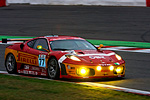 Keep in mind that qualifying rounds are the most important time before the race, so most drivers will push just a bit harder during the final moments of practice and qualification, chances of an accident are much higher than at the beginning of the sessions. The same is true for the final rounds of the race itself, drivers will ferociously try to pass the one in front of them, and could loose control in the corners as they try to brake later than their competitor.
Keep in mind that qualifying rounds are the most important time before the race, so most drivers will push just a bit harder during the final moments of practice and qualification, chances of an accident are much higher than at the beginning of the sessions. The same is true for the final rounds of the race itself, drivers will ferociously try to pass the one in front of them, and could loose control in the corners as they try to brake later than their competitor.
Select your position wisely, especially during the aforementioned periods, the Saleen crash I talked about earlier actually happened during a Warm Up sessions, when all places on the starting grid were already fixed, the driver had nothing to gain by going faster than his competitors but he still pushed it … just to tell you to keep vigilant at all times.
The photographs you should take :
The start and finish
This might seem obvious, but you would be amazed how many people actually pick the wrong spot at the start of a race. The trick here is to position yourself as close as possible to the actual starting point of the race, so you will be able to photograph the grid with all the cars still close together.
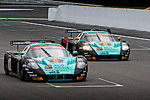 The same goes for the finish, make sure you are near the checkered flag at the end of the race, chances are you could witness a fierce battle just before the flag comes down as the drivers battle for those extra points in the championship.
Keep in mind that most of the time the winner of the race will do one more lap at slow speed to enjoy their victory and to allow the fans to get another look at them, this is also a good time to get some great shots, most likely with the door open and their hand in the air to show them taking first place overall.
The same goes for the finish, make sure you are near the checkered flag at the end of the race, chances are you could witness a fierce battle just before the flag comes down as the drivers battle for those extra points in the championship.
Keep in mind that most of the time the winner of the race will do one more lap at slow speed to enjoy their victory and to allow the fans to get another look at them, this is also a good time to get some great shots, most likely with the door open and their hand in the air to show them taking first place overall.
The paddock area
This is the most open area of the entire racing grounds, and you will encounter regular visitors with their kids walking around trying to get a glimpse of their idol. This is also the place where those large trucks are parked during the race, make sure to have some images from the inside of these massive trailers, some of them are moving factories that hold an entire workshop.
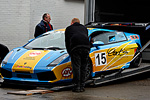 We even encounter spare cars in these on occasion, so they are surely worth a second look, don’t dismiss them altogether, they are nicely lined up, hence a shot showing this row of big rigs works very well in a review of the race.
We even encounter spare cars in these on occasion, so they are surely worth a second look, don’t dismiss them altogether, they are nicely lined up, hence a shot showing this row of big rigs works very well in a review of the race.
This is also the place to encounter the race drivers before the actual race or when their team mate is doing a stint on the track, they have to rest too, and most of the time you will find special tents holding entire restaurants on the paddock where mechanics, managers and drivers get together to talk strategies and relax over a nice meal. It is rather hard to get invited into these tents, but give it time, once the team gets to know you and your photographs you would be amazed how easy it is to open these doors for you.
Track side :
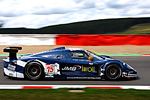 The races are the ideal place to do panning shots, the cars pass you regularly and you can afford to experiment with your shutter speed. For an in depth tutorial on panning race cars you could read our Make panning shots like a pro tutorial, but here are a few things to remember :
The races are the ideal place to do panning shots, the cars pass you regularly and you can afford to experiment with your shutter speed. For an in depth tutorial on panning race cars you could read our Make panning shots like a pro tutorial, but here are a few things to remember :
Panning takes practice, it is safe to start with a rather fast shutter speed so you’ll come home with good, sharp panning shots, and after a few rounds to lower the shutter speed to get more movement in your shots, but the hit rate will drop significantly.
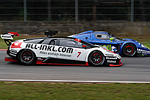 When you do obtain track access for a race, make the most of it, don't stay put on a single location, move around. Most races will last about 60 minutes, so you have some time to move around, take a good look at the layout of the track beforehand so you can judge the position of the sun during the race, always try to have it in your back when shooting race cars.
When you do obtain track access for a race, make the most of it, don't stay put on a single location, move around. Most races will last about 60 minutes, so you have some time to move around, take a good look at the layout of the track beforehand so you can judge the position of the sun during the race, always try to have it in your back when shooting race cars.
Remember you are working with a digital camera, so you will not have the cost of developing film, so shoot – shoot – shoot … the more the better. If the resulting image isn’t any good you can always delete it, if you didn’t take the shot you will never know if it could have been a winner. So keep hitting that shutter button and rest assured that you will have at least some great shots, probably not a 50% result, but if you come home with only 5% good panning shots out of 500 shots, you still have 25 great photographs right ?
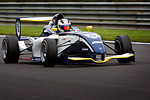 A good panning shot has the car in reasonably focus while the background and the track are blurred from the swing with the lens you’ve made, the trick is to keep the car at the same spot in the frame while you swing the camera and press the shutter button. Keep in mind to continue your swing even after pressing the shutter button, this will make the car come out sharp. If you stop your swing immediately after pressing the shutter you can be almost certain the shot will be blurred and lost.
A good panning shot has the car in reasonably focus while the background and the track are blurred from the swing with the lens you’ve made, the trick is to keep the car at the same spot in the frame while you swing the camera and press the shutter button. Keep in mind to continue your swing even after pressing the shutter button, this will make the car come out sharp. If you stop your swing immediately after pressing the shutter you can be almost certain the shot will be blurred and lost.
If you are using a long telephoto zoom lens you could really frame in tight on the driver, with open wheel cars this is important : try to get the helmet in focus and show one of the front wheels to give an impression of absolute speed. If you position yourself in a corner you might even be able to see his hand peak out of the cockpit while he’s turning the steering wheel … if you can see the white in his eyes you have a winning shot !
Pit lane :
Do note that pit lane access is not always granted, and for a good reason … it is extremely dangerous, especially during the race itself. The cars are entering this lane rather fast and want to leave as soon as possible too, they will not wait for you to get out of the way, so be prepared to keep an eye out for moving race cars at all times while shooting in the pit lane.
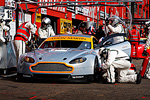 The mechanics don’t really like being disturbed while working, every second counts you know, a race is won or lost during a pit stop, so stay clear, do not hinder them in any way, they will not take kindly to you poking your lens into their face while they are trying to get the car back on the track in a hurry.
The mechanics don’t really like being disturbed while working, every second counts you know, a race is won or lost during a pit stop, so stay clear, do not hinder them in any way, they will not take kindly to you poking your lens into their face while they are trying to get the car back on the track in a hurry.
Also note that when re-fueling is in progress the car can catch fire, do not get too close at this moment, that is why the pit crew are wearing special overalls and helmets and at least one guy has a fire extinguisher ready for deployment in case something goes wrong … remember this isn’t for show !
If you want to have an image of this use a long focal length so you are standing at a nice distance just in case something goes wrong. A fire is impressive and worth shooting, but not when you are located two feet away from it, and always remember that lives are at stake at that point.
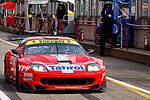 Most of the time the pit wall is off limits for most photographers, you will need additional access to stand on the pit wall itself, the resulting shots are amazing, but the marshals will remove you if you do not have the necessary accreditation, and you do not want to get into an argument with these guys, as they can revoke your entire access for the race. Naturally the pit wall will cope with the team managers checking lap times during the race, getting a photograph of them at work is always nice to put in a magazine, it is all part of the game.
Most of the time the pit wall is off limits for most photographers, you will need additional access to stand on the pit wall itself, the resulting shots are amazing, but the marshals will remove you if you do not have the necessary accreditation, and you do not want to get into an argument with these guys, as they can revoke your entire access for the race. Naturally the pit wall will cope with the team managers checking lap times during the race, getting a photograph of them at work is always nice to put in a magazine, it is all part of the game.
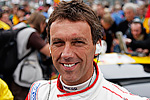 Do note that prior to the actual race most circuits have a ‘pit walk’ where people can walk around the cars and look at the impressive line up, downside is that the pit walk is open to regular visitors too, so you’ll be faced with way to many people to make any decent shots, the pit walk is nice to do some candid shots, but other than that you are much better with getting pit access as a photographer.
Do note that prior to the actual race most circuits have a ‘pit walk’ where people can walk around the cars and look at the impressive line up, downside is that the pit walk is open to regular visitors too, so you’ll be faced with way to many people to make any decent shots, the pit walk is nice to do some candid shots, but other than that you are much better with getting pit access as a photographer.
In the pit lane you can make some great images of the cars while they are being worked on, here you will be able to use just about every lens you took with you, try to get some low angle views of the car without people around it. Another option is to get above the pit lane, on most tracks you have some kind of stands right above the pit boxes, unfortunately you will be having the find a spot among the regular visitors, but an high angle can result in some stunning shots of the race cars below.
If the driver is already sitting inside the car you will have to use your flash to get some light onto his face. His eyes are bound to be in the shadow because of the helmet he’s wearing, a little help from your flash will make them visible in the shot, don’t blind him ok ?
If you are located in the pit lane during the race it is always a good idea to have a small radio with you. Chances are the race is covered life on some local radio station, so you can follow what is happening, this way you can anticipate what will occur in the pit lane a bit in advance so you get to a position that will allow you to capture the action in or around the pit box of that crew.
24 hour races
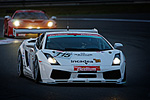 During a race that takes 24 hours in total you have ample opportunity to shoot the cars, they will be passing your lots of times so it is safe for you to change position around the track regularly.
During a race that takes 24 hours in total you have ample opportunity to shoot the cars, they will be passing your lots of times so it is safe for you to change position around the track regularly.
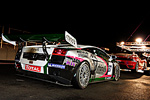 I would stay on the same spot for about four to five rounds, during that time you should have taken photographs of all the cars that are still in the race, then I move on to the next spot and stay there for another four to five laps. I continue to do this until I’ve covered all the good spots around the track, hence you should wear good shoes, you will be doing several Miles during these 24 hours and not all races have a shuttle service available to drive you around the track. During the night make sure you at least check out the pit lane again, the ambiance at that time is truly amazing.
I would stay on the same spot for about four to five rounds, during that time you should have taken photographs of all the cars that are still in the race, then I move on to the next spot and stay there for another four to five laps. I continue to do this until I’ve covered all the good spots around the track, hence you should wear good shoes, you will be doing several Miles during these 24 hours and not all races have a shuttle service available to drive you around the track. During the night make sure you at least check out the pit lane again, the ambiance at that time is truly amazing.
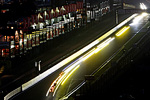 One shot that you just have to take during a night race is a long exposure shot with the cars passing you with their headlights on, resulting in those amazing looking streaks against a very dark background, every photographer at a 24 hours race should at least come home with some of these shots.
One shot that you just have to take during a night race is a long exposure shot with the cars passing you with their headlights on, resulting in those amazing looking streaks against a very dark background, every photographer at a 24 hours race should at least come home with some of these shots.
The longer the exposure the more streaks you will get from the headlights of the race cars, here we went for a 1.3 second exposure, with a 3 second shutter speed the effect would be even more dramatic.
Settings
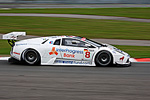 When doing panning shots you will most likely work in shutter priority to make sure you get some movement in the wheels and the background, while keeping the car sharp in the frame. Depending on the speed of the cars your could fix your camera at a shutter speed of 1/25 up to 1/250 leave the ISO at 100 on a sunny day and raise it to maximum 400 at a rainy day if needed (this depends on the maximum aperture of your lens, our 70-200mm f/2.8 L IS USM can cope with ISO at 200 most of the time)
When doing panning shots you will most likely work in shutter priority to make sure you get some movement in the wheels and the background, while keeping the car sharp in the frame. Depending on the speed of the cars your could fix your camera at a shutter speed of 1/25 up to 1/250 leave the ISO at 100 on a sunny day and raise it to maximum 400 at a rainy day if needed (this depends on the maximum aperture of your lens, our 70-200mm f/2.8 L IS USM can cope with ISO at 200 most of the time)
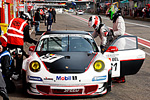 For the static shots or the action shots on the paddock or in the pit lane I would suggest using aperture priority with a setting of f5.6 or f8.0 depending on how much depth of field you would like in your shot. A photograph at f2.8 will result in a shallow DOF and is very nice if you managed to focus on exactly the right item in your frame, for instance the eyes of the nice lady holding the plaque next to the car during the pit walk before the race starts.
For the static shots or the action shots on the paddock or in the pit lane I would suggest using aperture priority with a setting of f5.6 or f8.0 depending on how much depth of field you would like in your shot. A photograph at f2.8 will result in a shallow DOF and is very nice if you managed to focus on exactly the right item in your frame, for instance the eyes of the nice lady holding the plaque next to the car during the pit walk before the race starts.
Back home
Go over your shots, do not be surprised if many of your shots are unacceptable, race photography is a very difficult niche in automotive photography, and takes a lot of practice to get perfect, but can you imagine a better way to spend a weekend ?
It isn’t always easy to spot the action in the pit lane in time, remember a pit stop is counted in seconds, so the saying of being at the right spot at the right time couldn’t be more appropriate in race photography. Things happen quickly so don’t mind using burst mode on your camera, from the ten frames at least one or two will be worth having.
There is always next year, you will have more experience with your gear and chances are that the hit rate on your shots will be higher, so don’t get discouraged with mediocre results, Rome wasn’t built in a day you know, it takes time to perfect your race photography skills.
 |
CPT Premium member BONUS : 55428 If you would like to print our Race photography, a day at the track tutorial you can download our special PDF which is optimized for hardcopy layout. |
Note : commercial use or publishing of our tutorials in any way, written or electronic, is strictly forbidden, we present these for your personal development only. None of our material may be published in any way without prior, written permission from the Car Photography Tutorials founder. All workflows and photographs are copyright protected and owned by the Car Photography Tutorials team unless stated otherwise
Advertisement
Become a MEMBER
Premium Membership
Become a CPT Premium Member and download all our tutorials including a PDF for printing and the result as a PSD file with layers if any.
Interesting articles
Behind the scenes of a professional car shoot
You've managed a nice exotic super car for a private photo shoot, but how do you manage an outdoor shooting ? We will explain 10 of the best tips for you.
Filters in the digital age
On a forum you might have red a discussion about using filters before, is it necessary or not ? We give you some tips.
Outdoor car show - Best practice tips
one of the best opportunities to get a nice, exotic super car in front of your camera is during one of the many outdoor car shows during the summer, we take you over some tips to get the best shots.
Running PhotoShop actions with a G13 or G510 gaming keyboard
I am a big fan of automating workflows in PhotoShop to speed up post processing, after a while I had a lot of ctrl and alt key combinations so I bought a gaming keyboard, first the Logitech G510 and later on I added the Logitech G13
Post processing automotive event photographs
We all know the drill, we’ve been to a car show or outdoor event and we’ve encountered some amazing cars but our shots have bad backgrounds so we'll have to revert to post processing to get it right.
